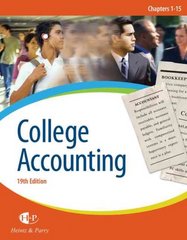Please show how you calculate and fit it out on the picture with the answer thank you!
The Ride - On - Water Company (ROW) produces a line of non-motorized boats. Inventory balances on December 31, 2017 were as follows: ROW uses a normal-costing system and allocates manufacturing overhead using direct manufacturing labor cost. The following data are for 2017: (Click the icon to view the account balances.) E:(Click the icon to view the data.) Read the requirements. Budgeted manufacturing overhead cost 121,000 Budgeted direct manufacturing labor cost $ 220,000 Actual manufacturing overhead cost 116,000 Actual direct manufacturing labor cost 220,000 2017 direct manufacturing Account Ending Balance labor cost in ending balance Work in process $ 50,700 $ 19,800 Finished goods 245,050 59,400 Cost of goods sold 549,250 140,800 Requirement 1. Calculate the manufacturing overhead allocation rate. Identify the formula and calculate the manufacturing overhead allocation rate. (Enter the result as a whole number.) Overhead allocation rate Requirement 2. Compute the amount of under- or overallocated manufacturing overhead. Identify the formula and calculate the under- or manufacturing overallocated overhead. (Use parentheses or a minus sign to report overhead overallocated.) Underallocated (overallocated)Requirement 3. Calculate the ending balances in work in process, finished goods and cost of goods sold if under- or overallocated manufacturing overhead is as follows: (a) written off to cost of goods sold, (b) prorated based on ending balances (before proration) in each of the three accounts, (c) prorated based on the overhead allocated in 2017 in the ending balances (before proration) in each of the three accounts. (a.) Calculate the ending balances in work in process, finished goods and cost of goods sold if under- or overallocated manufacturing overhead is written off to cost of goods sold. Account Ending Balance Work in process Finished goods Cost of goods sold (b.) Begin by identifying the formula and calculating the adjustment to each account assuming under- or overallocated manufacturing overhead is prorated based on ending balances (before proration) in each of the three accounts. (Use a minus sign or parentheses to show overallocated amounts and adjustments to be subtracted.) (b.) Adjustment WIP FG CGS Now calculate the ending balances in work in process, finished goods and cost of goods sold if under- or overallocated manufacturing overhead is prorated based on ending balances (before proration) in each of the three accounts. (Use a minus sign or parentheses to show adjustments to be subtracted.) (b.) Ending Balance (adjusted) WIP FG CGS(c.) Begin by identifying the formula and calculating the adjustment to each account assuming under- or overallocated manufacturing overhead is prorated based on the overhead allocated in 2017 in the ending balances (before proration) in each of the three accounts. (Use a minus sign or parentheses to show overallocated amounts and adjustments to be subtracted.) (c.) Adjustment WIP FG CGS X (c.) Enter the formula and calculate the ending balances in work in process, finished goods and cost of goods sold if under- or overallocated manufacturing overhead is prorated based on the overhead allocated in 2017 in the ending balances (before proration) in each of the three accounts. (Use a minus sign or parentheses to show overallocated amounts and adjustments to be subtracted.) (C.) Ending Balance (adjusted) WIP FG CGS Requirement 4. Which method would you choose? Justify your answer. The method that makes the most sense is to The amount of the over- underallocation amount is SO









